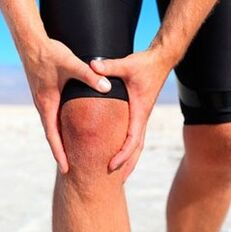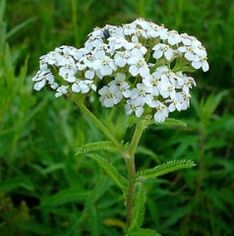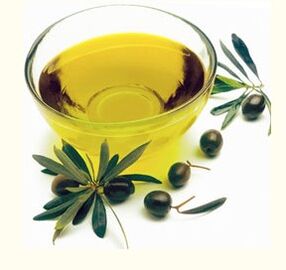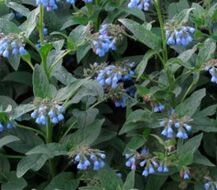Negative changes and destruction processes that occur in the cartilage tissue of the knees are called knee joint arthrosis. This disease is chronic and is accompanied by symptoms of pain. Most often, knee arthrosis develops with age, at a young age, usually with a post -traumatic look. The disease is also called gonarthrosis, and its folk name is "deposit of salts".
Signs
Gonarthrosis is the destruction of cartilage tissue in the bone vessel due to poor blood flow. As a result, arthrosis caused by bone growth may develop.

Usually, the first symptoms of arthrosis are almost invisible. Weak pain does not cause much discomfort and does not limit movements. It can pass up to several years before exacerbation. Symptoms of pain can be slightly activated after exercise or legs.
As the disease develops, new symptoms appear and the old ones are improved. The pain looks like it does not last long during rest. Long gait or weight -lifting weight responded to prolonged pain in the knees.
After the 2nd stage of the knee joint arthrosis, such symptoms appear:
- Synovitis - The joint fluid accumulates in the joint. Its excess can lead to the development of dense formation on the anterior wall in the joint. This phenomenon is called a baker cyst, it can be cured without surgery.
- Knee deformation. At first it will swell a little, the 2nd and 3rd degree may change the shape of the knee.
- Crushed. The 2nd and 3rd stages of the disease appear. With sharp crushing, the symptoms of pain are clearly felt.
- Limited mobility. This is characteristic of the 2nd and 3rd degree of arthrosis, when you can only get the leg at the right angle. In a neglected form, the elbows can be completely motionless, and the joints in them are very deformed.
- Metate -sensitivity. Pain during weather conditions.
Symptoms and their intensity may vary significantly in the stage of disease development:
- At first degree, the pain arises after active physical effort. Initial arthrosis damages the cartilage but does not deform the joints. Diagnosis of the disease is difficult.
- In the second degree, the joint gap with a narrow, damaged cartilage tissue is clearly visible in X-rays. With the participation of the knees, movements cause severe pain when the bend appears crunchy. The joints work worse, their deformation is noticeable with bare appearance.
- In the 3rd degree, the bare areas of the bone "meet" through the thin cartilage tissue. The salt is inserted into the joint. The pain is maintained even during rest.
The types of disease
Knee arthrosis is of several types. Originally:
- Primary. Knee joint arthrosis does not depend on other diseases. Older people, women, and overweight people are at risk.
- Medium. The disease occurs after injury or infectious disease. This can be avoided if you treat knee joint damage or inflammation in a timely manner.
By location:
- Mutual. Both verses will be affected. The disease is age -related, more clearly and seriously threatened by disability. Bilateral arthrosis is most often the first.
- Right -Out. The disease is attacked by the right knee, most commonly found in athletes and people who regularly experience the load on the right leg.
- Left. The left knee is suffering, the disease is congenital in athletes and the full people of the elderly.
Knee deformed arthrosis is a disease that is characteristic of the larger size, full women. It is provoked by a strong deposit of salt. At the initial stage of deformation, the joints are exposed to the inner side of the joints, late - external also affects the external.Deformation of gonarthrosis should begin as early as possible to treat, so that the area above the area is protected from normal condition. The main symptoms are severe pain and crunchy.
Patelofemoral syndrome
Very often, knee arthrosis is preceded by Patelofmore syndrome. In medical literature and practice it is often referred to as arthrosis of the same name. It is a damage to the cartilage tissue in the patella. Patellofemoral Syndrome is accompanied by the following symptoms:
- Pain in the joint, activated with prolonged flexibility of the legs, jumping, running, walking stairs or quarreling.
- Knee limited mobility.
- Crystal and "clicks" in the joints.
- Station in the joints.
Patelofemoral syndrome is usually manifested in people whose activities or lifestyles are associated with a great deal of knees - athletes, fat people. Also, this type of arthrosis affects the elderly. Often, patellofemal arthrosis results in severe knee injury.
When diagnosing the syndrome, it is important to provide the rest of the fist leg immediately. Sometimes, in order to remove the load from the knee, your doctor may recommend orthosis or tight bandages. Full people will need to lose weight. You can make soft compresses at home to relieve pain.
Patellofemoral syndrome gradually develops:
- At first degree, the pain only appears after a very strong load, the knee fatigue is often felt.
- In the 2nd-pain and discomfort more often, the funds are limited. Symptoms occur after rest.
- In the 3rd-consertial pain, a significant restriction of movements.
It is necessary to treat Patalofmoral syndrome perfectly, not just pain relief. Treatment should include medication administration, chondroprotectors, physiotherapy. Diet and physiotherapy exercises will not be unnecessary.
Post -traumatic arthrosis
Post -traumatic arthrosis is a type of disease that is most commonly found at a young age. After the knee is damaged, the limb is fixed and blood flow will deteriorate. This has a negative effect on cartilage tissue and provokes the development of arthrosis. Sometimes post -traumatic arthrosis can develop after surgery on the joints. Scars on the tissues may interfere with the blood supply to the knee.
The post -traumatic type of this disease is chronic, so treatment is intended to make arthrosis even more progression. It is almost impossible to cure post -traumatic arthrosis at home. Analgesics, chondroprotectors and antispasmodics, physiotherapy exercises, massage and equipment will be required. In advanced cases, surgical intervention may be necessary.
Hemarthrosis
Hemartrosis is a separate type of knee arthrosis, which is evident due to damage or blood coagulation problems. Hemortrosis can be caused by such factors:
- Knee bruises or fractures;
- Traumatic injury to the menkus and cartilage;
- Ligament or synovial membrane decomposition;
- Fracture of the thigh or large berets;
- Hemophilia;
- Tumors of different origin;
- Some neurological and infectious diseases;
- Prolonged anticoagulants;
- Osteoarthritis;
- Surgical intervention;
- Problems of blood vessels.
- The knee is swollen or significantly changed its form;
- By pressing under the fingers, the flood is felt;
- The temperature rises to the affected site;
- Mason and blue soft fabrics.
It is possible to accurately diagnose after puncture of hemarthrosis. In addition to articular fluid analysis, CT and MRI can be done.
To prevent complications, hemarthrosis is needed simultaneously. With minor injuries, you can start treatment at home. Simple methods of first aid will help reduce the effects of bleeding in the joint:
- Provide damaged article in peace;
- Raise your leg and fix it;
- Make cold compression;
- Get an anesthetic.
This sequence of action will relieve the symptoms of pain at home and promote the moderate degree of hemorrhage, in more difficult cases, you should seek medical attention.
Folk remedies
Treatment of gonarthrosis by folk remedies should be agreed with your doctor. It is advisable to combine folk remedies with official medicine methods. With the help of folk remedies at home, hemarthrosis can be effectively treated with a moderate degree or relieves the patient's condition with complications. It is advisable to make a compress with Horseradish:
- Grate and grate a small piece of a small horse.
- With strongly sensitive skin, the rhizome is replaced by plant leaves.
- Hold the mass in the water bath for a few minutes.
- Put the root gauze and make compresses.
- The duration of the procedure is two hours.
At home, with traumatic hemarosis, ointments cannot be used within the first two days after injury.
With severe injuries and abundant or prolonged bleeding in the joint, you should definitely contact a traumatologist. Folk methods of treatment in this situation are of secondary importance. Hemartrosis should be treated with a hospital -based diet, but at home you can use medications that have anti -inflammatory and hemostatic action. The infusion based on such herbs will be useful:

- Yarow;
- Oregano;
- Nettle.
Do so:
- Plant raw.
- Mix the herbs in equal parts.
- Three tablespoons of the collection pour 600 ml of boiling water.
- Insist on 1 - 1. 5 hours.
A warm filtered infusion should be taken three times a day 50 ml.
Gelatin
At home you can try deformation arthrosis with gelatin treatment. In large quantities, it contains collagen, which improves the condition of cartilage tissue and increases the production of interstitial lubrication. Gaycetin treatment should be combined with the intake of vitamin complex with iron and vitamin.
Gelatin Medicinal mixture is made according to this recipe:
- Pour a teaspoon of gelatin 50 ml of cold water.
- Leave the mixture for 12 hours.
- Add 150 ml of boiling water.
- Stir, add a teaspoon of honey.
Drink a glass of this drink on an empty stomach for 10 days. Then you need to break a week. The course is repeated twice.
Ointments and garbage
The following components are required to prepare an effective ointment home:
- Turpentine - 150 ml;
- Vodka - 150 ml;
- Olive oil - 150 ml;
- Camphor - 3 grams.

All components of ointments should be mixed and used twice a day twice a day.
At home, deformity arthrosis can be treated using radish -based ointments. The following ingredients will be required:
- Black radish;
- Linden honey - 150 grams;
- Vodka - 100 ml;
- Sea salt - 15 grams.
MASI recipe:
- Clean and cut radish.
- Skip the root crop in the meat grinder or grate in a blender.
- Remove the juice from the radio.
- Add other components and mix the mass.
This mixture is cut into the knee.
As an ointment, you can use fat pork fat. Every evening it is necessary to swallow this product in the joints and isolate them at night. In this way, arthrosis needs treatment for at least six months.
When you need to quickly relieve pain and restore mobility on the leg, warming the ointments will help. It is important to understand that these medicines cannot cure the disease, but only temporarily relieve the symptoms. Contraindication for the use of heater medications, -traumatic arthrosis and damaged skin.
Heating medicine, which has an anti -inflammatory effect, can be done at home. Therapeutic ointment is made from these components:
- Tissue leaves - 1 cup;
- Tissue roots - 2 cups;
- Olive oil - 0. 5 cups;
- Honey - 0. 5 cups.
Method of preparation and use:
- Grate and mix with vegetable materials.
- Melt, if necessary, dear.
- Mix all components, it is best to do this with a mixer.
- Before use, the desired part of the product should be heated.
- The ointment can be stored for 2 weeks in the refrigerator or in the freezer for 3 months.
- Apply the drug in the joint, isolirated and leave for 8 - 12 hours.

Hyaluronic acid
Primary arthrosis is very effective in treating hyaluronic acid. This substance is the basis of synovial fluid.Intracular injections with hyaluronic acid may cure or stop any type of knee arthrosis. It is forbidden to perform this procedure at home! Injections with hyaluronic acid should be done only by an experienced physician under special conditions.
In turn, the patient can eat hyaluronic acid -rich foods to improve the therapeutic effect. For the health of the funds it is advisable to introduce the following dishes in your diet:
- Chicken broth or jelly is prepared using crests, resins, tendons and skin;
- Soy;
- Tofu;
- Soy milk;
- Red grape skin;
- Red wine;
- Starch root crops and vegetables.
In order to activate the production of hyaluronic acid with its own body, it must take sufficient calcium, routine and vitamin C.

























